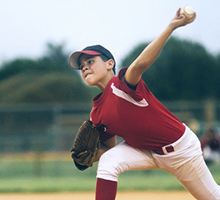
When Victor Carrion, MD, was a pediatric psychiatry fellow in the mid-1990s, he had an “a-ha” moment about some of his poorly behaved patients that set the trajectory of his career. These kids had been traumatized, and the adults around them didn’t recognize it.
He described what happened for my feature story in Stanford Medicine magazine:
“Kids were coming to see me with little notes from their teachers that said, ‘This child has ADHD. Please place on Ritalin,’” Carrion says. Chuckling slightly, he recalls his half-facetious reaction to these missives: “Wow: A diagnosis has been made; there’s a treatment plan; there’s not much for me to do here.”
But after carefully obtaining life histories for several patients, he realized that although some had ADHD, many others had been traumatized by such experiences as abuse, neglect or witnessing violence in their homes or communities. Their reactions — a triad of self-protective behaviors that experts summarize as “freeze, fight or flee” — were being misinterpreted as ADHD’s signature inattentiveness, hyperactivity, aggression and poor cooperation.
Childhood trauma, Carrion realized, was very poorly understood. People assumed kids were more resilient in the face of trauma than adults (they’re not), that you could deal with trauma by ignoring it (no) or that children traumatized before they had the vocabulary to describe what was going on would simply forget what had happened (no again). He wanted to understand what was really going on.
Now, 20 years later, his work and that of many other trauma experts across the country clearly shows we can’t afford to ignore the long shadow cast by early-life abuse, neglect, violence and other instability. “We need to address trauma because it impacts health, period,” Carrion told me. “Not just mental health; it impacts physical health as well.”
Although, as my story explains, the widespread nature and long-term effects of childhood trauma are daunting, there is good reason for hope. Carrion has seen it in children who receive cue-centered treatment, a trauma therapy he developed at Stanford:
“Many kids see themselves as bad, a problem, crazy,” Carrion says. “We teach them that their response to trauma is something that was adaptive, and hence it was learned really well by their bodies as a good response. But when the response is maintained and triggered by reminders, it becomes maladaptive.”
… Carrion is optimistic that the treatment will make a durable improvement in kids’ lives.
“Kids get it,” he says. “They can say, ‘That’s what’s happening to me,’ and become their own agents of change.”
Via Scope
Illustration by Gérard DuBois
Authors
-
- Erin Digitale
- more by this author...































 Previous
Previous
